Top 10 Most Famous Mausoleums In World
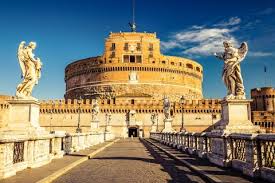
The tomb that was built at Halicarnassus for Mausolus, a governor in the Persian Empire, is known as the Tomb of Mausolus. Antipater of Sidon named the structure as one of his Seven Wonders of the Ancient World because it was regarded as such an aesthetic triumph.
Since then, the term mausoleum has come to refer to any large tomb, and the top ten include some of the most well-known ones. Sadly, the well-known Tomb of Mausolus was not included on this list. In the 15th century, European Crusaders eventually disassembled it after it was damaged by an earthquake.
10 Most Famous Mausoleums in World
- Tomb of Cyrus
- Lenin Mausoleum
- Humayun’s Tomb
- Castel Sant’Angelo
- Tomb of Jahangir
- Imam Husayn Shrine
- Mausoleum of the Shirvanshahs
- Shah-i-Zinda
- Terracotta Army
- Taj Mahal
10. Tomb of Cyrus

Tomb of Cyrus In the sixth century B.C., Cyrus the Great established and ruled the vast Persian Empire. The most significant structure in Pasargadae, the ancient capital of Persia in modern-day Iran, is the Hist tomb. When Alexander looted and destroyed Persepolis, he went to Cyrus's tomb and told one of his warriors to go inside.
He discovered a golden bed, a table with drinking vessels, a gold coffin, ornaments with precious stones, and the tomb's inscription: I am Cyrus, the man who established the Persian empire and was Asia's king, passerby. Sadly, no such inscription has survived to the present day.
9. Lenin Mausoleum
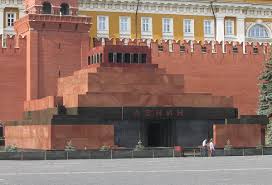
The current resting place of Vladimir Lenin is Lenin's Mausoleum in Moscow. Since his death in 1924, his embalmed body has been on public display there. To inject preservatives into the clothing and moisturize the features, the corps must work every day.
READ ALSO » 9 Most Famous Con Artists And Their Famous Scams In The World
The sarcophagus of Lenin is kept at a humidity of 80 to 90% and a temperature of 16 °C (61 °F). A special chemical bath is used to remove the body every eighteen months. In the tomb, visitors are prohibited from smoking, talking, or taking pictures.
8. Humayun’s Tomb
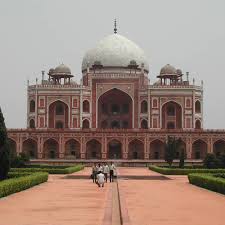
Humayun's Tomb In 1562 AD, his wife commissioned the construction of the Mughal Emperor Humayun's tomb. It was the first garden tomb on the Indian subcontinent and set an example for Mughal architecture in the future. India's Delhi is home to the mausoleum.
influenced by the architecture of Iran; The tomb rises 47 meters (154 feet) in height. The white marble exterior is supported by the outer layer of the double dome, and the inner layer gives shape to the cavernous interior volume.
The rest of the building is made of red sandstone, which stands out from the pristine white exterior dome. The main tomb was built in the middle of a 30-acre Persian-style garden, and its construction took more than eight years.
7. Castel Sant'Angelo
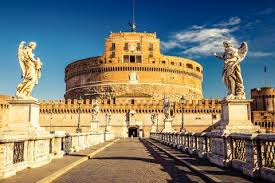
The Mausoleum of Hadrian, more commonly referred to as the Castel Sant'Angelo, is a towering, cylinder-shaped structure in Rome. Hadrian originally commissioned it as a mausoleum for himself and his family. A year after Hadrian's death in 138, his wife Sabina's and his first adopted son's ashes were scattered here.
The remains of subsequent emperors were also placed here after this, with Caracalla's deposition being the last one recorded in 217. The building is now a museum and was once a castle and fortress.
6. Tomb of Jahangir
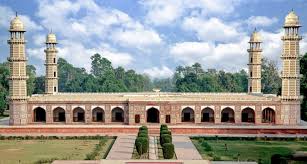
The tomb of Mughal Emperor Jahangir, who ruled from 1605 to 1627, is a mausoleum. Pakistan's Lahore is home to this renowned mausoleum. The mausoleum was built by his son ten years after his father's death.
READ ALSO » Top 10 Most Famous Bald Men In The World 2023/2024
It has four 30-meter-tall minarets and is located in an attractive walled garden. Using colored marble and frescoes, the interior is decorated. A white marble sarcophagus with mosaic flowers carved into its sides forms the interior of the mausoleum.
5. Imam Husayn Shrine
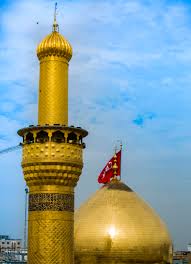
The Imam Husayn Shrine is located in the city of Karbala, Iraq. The Imam Husayn Shrine is located near the spot where Husayn ibn ‘Ali, the second grandson of Muhammad, was killed during the Battle of Karbala. Many Shi'as make pilgrimages to the tomb because it is considered one of their most sacred sites.
The shrine's boundary wall is surrounded by glass-decorated wooden gates. The courtyard is divided into 65 smaller rooms by the gates, and both the inside and the outside are tastefully decorated. A cage-like structure, directly beneath a golden dome, surrounds Husayn's grave.
4. Mausoleum of the Shirvanshahs
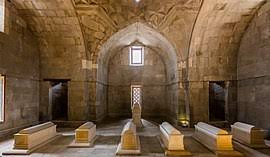
This mausoleum is part of the Palace of the Shirvanshahs, the largest structure in Baku's Inner City that belongs to the Shirvan-Absheron branch of Azerbaijani architecture. The complex includes the main palace building, a small stone pavilion, burial vaults, a mosque, and the remains of the bath house in addition to the Shirvanshahs' Mausoleum.
The mausoleum is rectangular in shape and has a hexahedral cupola that is covered in multi-radial stars from the outside. In the 15th century, Sultan Khalilullah I directed the construction of this light burial vault for his mother and son.
3. Shah-i-Zinda
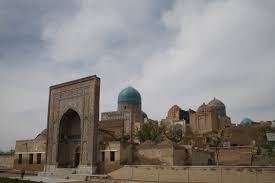
One of Central Asia's most well-known mausoleums is Shah-i-Zinda, which is in the north-eastern part of Uzbekistan. The Shah-i-Zinda complex is made up of three groups of buildings that are connected by four domed passages with arches.
The first buildings were built between the 11th and 12th centuries. However, the majority of the buildings are from the 14th to 15th centuries. The legend of Kusam ibn Abbas, the cousin of the prophet Muhammad, is connected to the name Shah-i-Zinda, which means the living king. The lenged said that he was going to beheaded, but he took his head and went into the deep well (the Garden of Paradise), where he still lives.
2. Terracotta Army
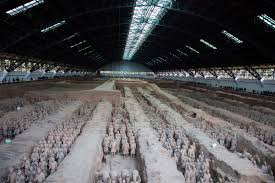
The Mausoleum of the First Emperor of the Qin Dynasty, who unified China after defeating all rival states (221 BC-206 BC), can be found close to the city of Xi'an. Although the emperor's buried terracotta army has yet to be discovered, it has already established itself as one of China's most popular tourist attractions. Over 8,000 soldiers, 130 chariots with 520 horses, and 150 cavalry horses are thought to have been in the three pits that housed the Terracotta Army. The majority of these are still buried.
READ ALSO » Top 10 Most Famous People In The World
The figures are realistically sized. A realistic appearance was achieved by the individual facial features, colored lacquer finish, and real weapons used in the production of these figures. Even though the weapons were stolen and their color has greatly faded, their existence demonstrates how much work and skill went into making them.
1. Taj Mahal

The Taj Mahal is a massive white marble mausoleum in Agra. It was built on Shah Jahan's orders between 1632 and 1653 in memory of his favorite wife. One of Mughal architecture's masterpieces and one of India's great wonders, the Taj Mahal is one of the world's best-preserved and most exquisite tombs.
The monument, also known as a teardrop on the cheek of eternity, is actually a collection of connected structures. In addition to the white marble dome-topped mausoleum, there are several other stunning structures, reflecting pools, and extensive ornamental gardens with flowering trees and bushes.
